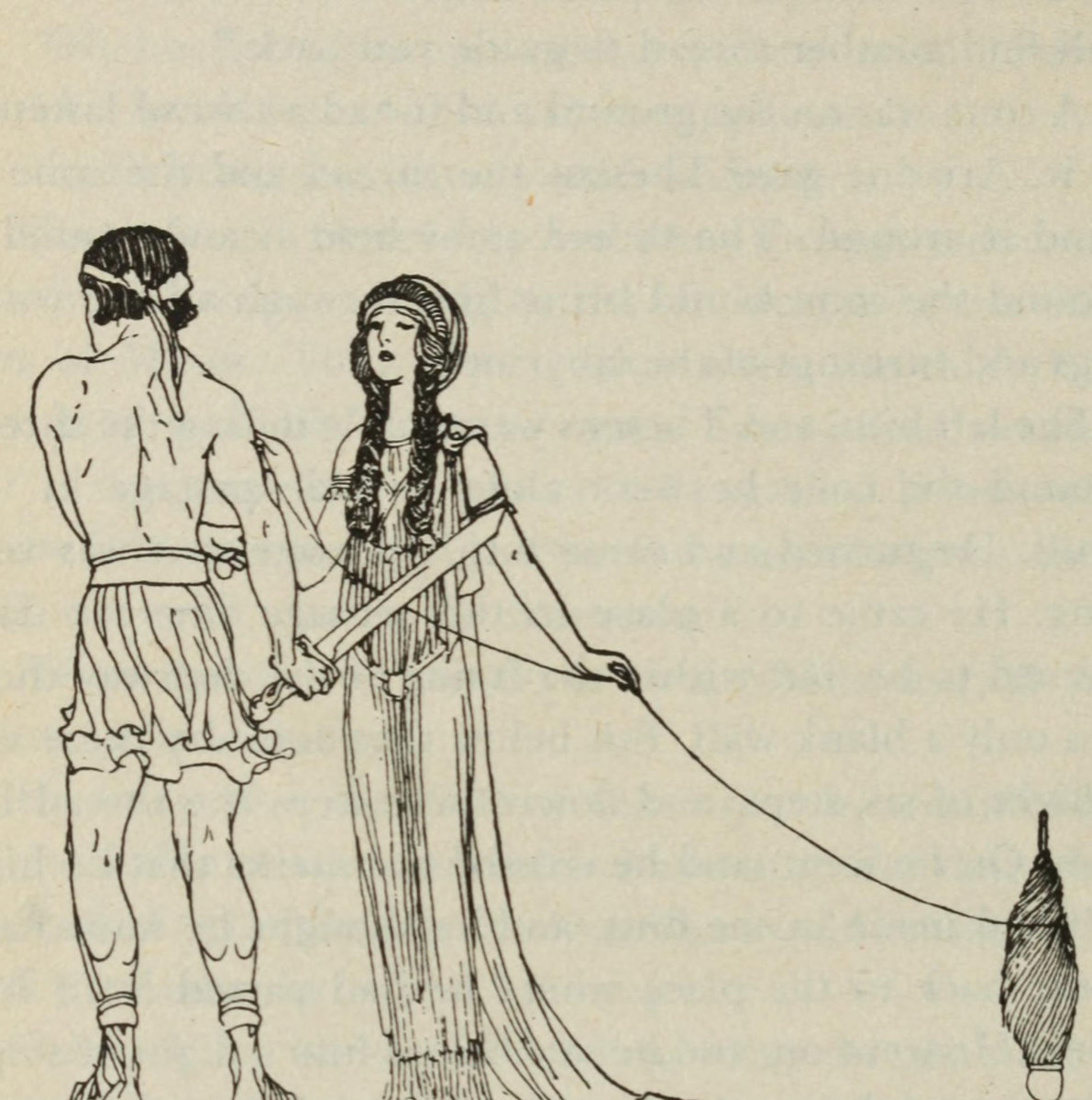Ariadne was a Cretan princess in Greek mythology. Often called the “Mistress of the Labyrinth”, she was mostly associated with mazes and labyrinths because of her involvement in the myths of the Minotaur and Theseus. She is best known for having helped Theseus escape the Minotaur but being abandoned by him on the island of Naxos; subsequently, she became the wife of Dionysus. Because ancient Greek myths were orally transmitted, like other myths, that of Ariadne has many variations. According to an Athenian version, Minos attacked Athens after his son was killed there. The Athenians asked for terms and were required to sacrifice 7 young men and 7 maidens to the Minotaur every 7 or 9 years. One year, the sacrificial party included Theseus, the son of King Aegeus, who volunteered to kill the Minotaur. Ariadne fell in love with him at first sight and provided him a sword and ball of thread (“Ariadne’s string”) so that he could retrace his way out of the labyrinth of the Minotaur. Ariadne betrayed her father and her country for her lover Theseus. She eloped with Theseus after he killed the Minotaur, yet according to Homer in the Odyssey “he had no joy of her, for ere that, Artemis slew her in seagirt Dia because of the witness of Dionysus”. The phrase “seagirt Dia” refers to the uninhabited island of Dia, which lies off the northern coast of the Greek island of Crete in the Mediterranean Sea. Most accounts claim that Theseus abandoned Ariadne, and in some versions Perseus mortally wounds her. According to some, Dionysus claimed Ariadne as wife, therefore causing Theseus to abandon her. Homer does not elaborate on the nature of Dionysus’ accusation, yet the Oxford Classical Dictionary speculated that she was already married to him when she eloped with Theseus.
| Alias Ariadne |
| Real Names/Alt Names Ariadne |
| Characteristics Myths & Legends, Deity, Bronze Age, Greek |
| Creators/Key Contributors Unknown |
| First Appearance Greek mythology |
| First Publisher ○ |
| Appearance List Literature: Homer’s Odyssey (c. 8th century BCE, English 1614), Homer’s Iliad (c. 8th century BC), poetry by Hesiod, Ovid, Plutarch, Thomas Corneille’s play Ariadne: A Tragedy in Five Acts, Letitia Elizabeth Landon’s poem “Ariadne” (1825), George Eliot’s Romola, Heinrich Wilhelm von Gerstenberg’s “Ariadne auf Naxos”, Anton Chekhov’s “Ariadne”, Friedrich Nietzsche’s “Klage der Ariadne”, A. A. Milne’s play Ariadne (1924), F. L. Lucas’s epic poem Ariadne (1932), Mary Renault’s The King Must Die (1958), Mario Vargas Llosa’s Death in the Andes. Opera: L’Arianna each by Claudio Monteverdi (1608), Ariadne by Johann Georg Conradi (1691), Arianna by Benedetto Marcello (ca. 1727), Richard Strauss’ Ariadne auf Naxos (1912), Albert Roussel’s 1931 ballet score Bacchus and Ariadne. |
| Sample Read Bulfinch’s Mythology by Thomas Bulfinch [Internet Archive] |
| Description Ariadne was a Cretan princess in Greek mythology. Often called the “Mistress of the Labyrinth”, she was mostly associated with mazes and labyrinths because of her involvement in the myths of the Minotaur and Theseus. She is best known for having helped Theseus escape the Minotaur but being abandoned by him on the island of Naxos; subsequently, she became the wife of Dionysus. Because ancient Greek myths were orally transmitted, like other myths, that of Ariadne has many variations. According to an Athenian version, Minos attacked Athens after his son was killed there. The Athenians asked for terms and were required to sacrifice 7 young men and 7 maidens to the Minotaur every 7 or 9 years. One year, the sacrificial party included Theseus, the son of King Aegeus, who volunteered to kill the Minotaur. Ariadne fell in love with him at first sight and provided him a sword and ball of thread (“Ariadne’s string”) so that he could retrace his way out of the labyrinth of the Minotaur. Ariadne betrayed her father and her country for her lover Theseus. She eloped with Theseus after he killed the Minotaur, yet according to Homer in the Odyssey “he had no joy of her, for ere that, Artemis slew her in seagirt Dia because of the witness of Dionysus”. The phrase “seagirt Dia” refers to the uninhabited island of Dia, which lies off the northern coast of the Greek island of Crete in the Mediterranean Sea. Most accounts claim that Theseus abandoned Ariadne, and in some versions Perseus mortally wounds her. According to some, Dionysus claimed Ariadne as wife, therefore causing Theseus to abandon her. Homer does not elaborate on the nature of Dionysus’ accusation, yet the Oxford Classical Dictionary speculated that she was already married to him when she eloped with Theseus. |
| Source Ariadne – Wikipedia |


